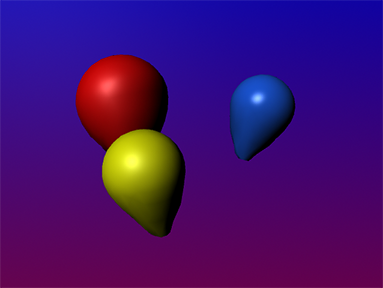
This example will show you how to create a flexible skin for a virtual balloon.
Create the balloon
To model the balloon you will create a Icosahedron. This will result in more realistic movement than a polygon sphere.
To model the balloon
- In the Polygons menu set select Create > Polygon Primitives > Platonic Solids >
 .
. The Polygon Platonic Solid Options window appears.
- Set Platonic Type to Icosahedron and click Create.
- Select Mesh > Smooth.
- In the Attribute Editor, select the polySmoothface1 tab.
- Set Method to Linear
- In the Linear Poly Smooth History section adjust the attributes as follows:
- Division Levels: 1
- Divisions per Face: 3
- Push Strength: 0.8
- Roundness: 2
Resize and reshape the balloon
In this example the balloon model for the balloon will remain spherical. You can optionally reshape the model into a more balloon-like shape.

- Select the balloon and select the Move Tool.
- Move the balloon above the ground plane (in the positive Y direction).
- Select Smooth Shade All mode (hotkey: 5).
-
 -click the balloon and select Face from the marking menu that appears.
-click the balloon and select Face from the marking menu that appears. The balloon now appears in face selection mode.
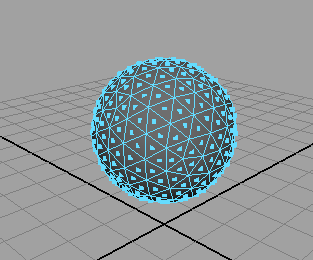
- On one side of the balloon, select 6 adjacent faces that form a hexagon.
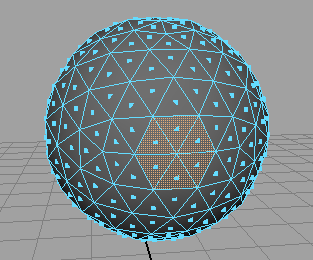
- Press
 .
. The selected faces are deleted.
Make the balloon model nCloth
- In the FX menu set select the balloon and then select nCloth > Create nCloth.
Maya converts the polygon balloon into an nCloth object.
Make the balloon model act like a balloon
Now that you have the basic shape for your inflated balloon, you need to configure the balloon’s attributes so it acts like a balloon and its initial state so it starts deflated.
To adjust the balloon's attributes
- Select the balloon.
- In the Attribute Editor, select the nClothShape1 tab.
- In the Collisions section set Thickness to 0.02.
- In the Dynamic Properties section set Stretch Resistance to 80.
- In the Pressure section set Pressure to 0 and Seal Holes to On.
- In the Quality Settings section set Evaluation Order to Parallel.
- Select the nucleus1 tab.
- In the Ground Plane section turn on Use Plane.
- Set the End Time of the playback range to 450.
- Playback the simulation.
The deflated balloon falls to the floor.
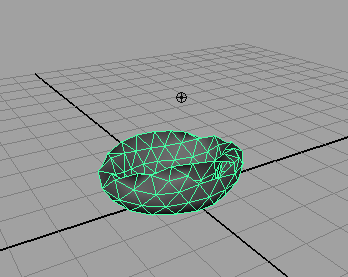
To set the balloon's initial state
- Go to the beginning of the playback range.
- Select the balloon and select Fields/Solvers > Initial State > Relax Initial State >
 .
. The Relax Initial State Options window appears.
- Select Edit > Reset Settings.
- Set Steps to 200 and click Relax Initial State.
Maya will automatically playback the scene to frame 200 and save the balloon simulation to disk.
- Select nCloth > Rest Shape> Set Rest to Start Shape.
The balloon begins its simulation in its deflated form.
Inflate and deflate the balloon
Now that the balloon begins deflated you can animate the balloon inflating and then deflating.
To inflate the balloon
- Go to the beginning of the playback range.
- Select the nCloth balloon.
- Open the Channel Box and under Inputs, select nClothShape1.
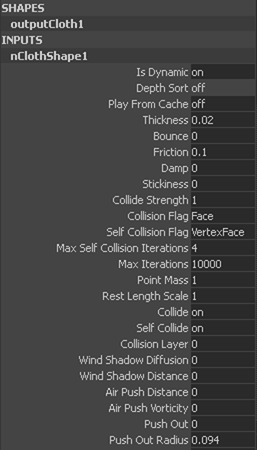
- Select Pressure and then
 -click Seal Holes to include it in the selection.
-click Seal Holes to include it in the selection.  -click either name and select Key Selected from the context-sensitive menu that appears.
-click either name and select Key Selected from the context-sensitive menu that appears. The fields will change color to confirm you set the keys correctly.

- Go to frame 200 of the simulation.
- Set Pressure to 10.
- Select Pressure.
-
 -click the name and select Key Selected from the context-sensitive menu that appears.
-click the name and select Key Selected from the context-sensitive menu that appears. - Playback the animation.
The balloon inflates very quickly initially, and then slows down until frame 200.
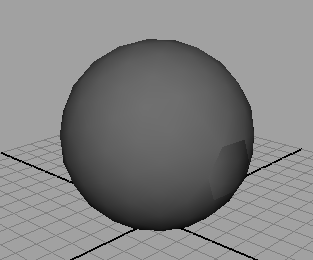
To deflate the balloon
- Go to frame 300 of the animation.
- In the Channel Box, select Pressure and
 -click Seal Holes to include it in the selection.
-click Seal Holes to include it in the selection.  -click either name and select Key Selected from the context-sensitive menu that appears.
-click either name and select Key Selected from the context-sensitive menu that appears. The fields will change color to confirm you have set the keys correctly.
- Go to frame 301 of the animation.
- Set Seal Holes to off.
-
 -click the name Seal Holes and select Key Selected from the context-sensitive menu that appears.
-click the name Seal Holes and select Key Selected from the context-sensitive menu that appears. - Go to frame 450 of the animation.
- Set Pressure to 0.
-
 -click the name Pressure and select Key Selected from the context-sensitive menu that appears.
-click the name Pressure and select Key Selected from the context-sensitive menu that appears. - Playback the simulation.
At frame 300 the balloon flies away due to the release of air from the hole in the geometry.